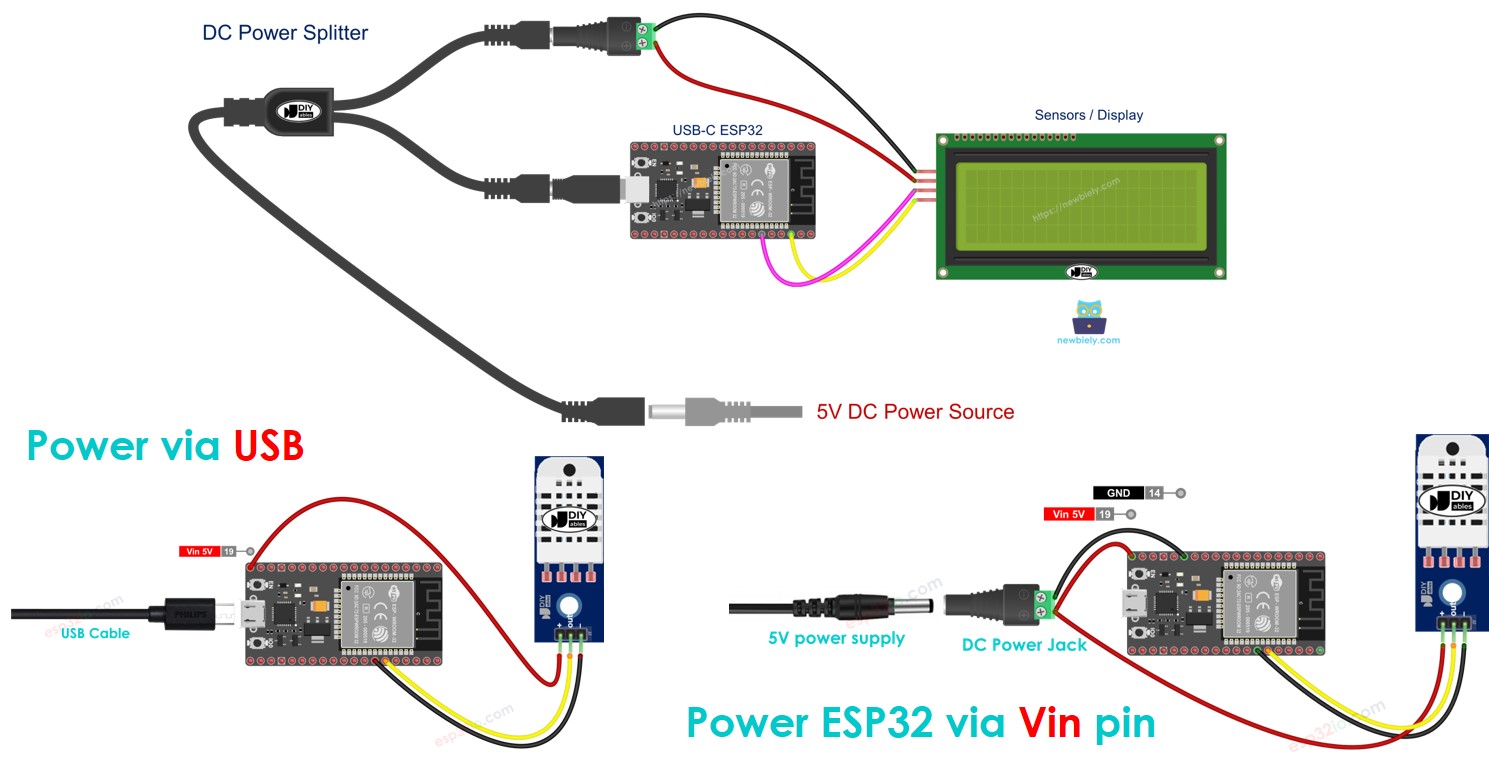
Best Way to Power an ESP32 Remotely
Remote monitoring and control applications are becoming increasingly popular, and one of the most common components used in these projects is the ESP32 microcontroller. The ESP32 is a versatile and powerful microcontroller that can be used for numerous IoT and home automation projects. One of the challenges faced when using the ESP32 in remote applications is how to power it reliably and efficiently. In this article, we will explore some of the best ways to power an ESP32 remotely.
1. Battery Power
One of the simplest ways to power an ESP32 remotely is to use a battery. Batteries provide a reliable and portable power source that can be easily recharged or replaced. When using a battery to power an ESP32, it is important to consider the capacity of the battery and the power consumption of the ESP32. Choose a battery with sufficient capacity to power the ESP32 for the desired length of time, taking into account factors such as sleep mode and power-saving features.
Lithium-ion batteries are a popular choice for powering IoT devices due to their high energy density and long lifespan. When using a lithium-ion battery to power an ESP32, consider adding a charging circuit to ensure safe and efficient charging.
2. Solar Power
Another popular option for powering an ESP32 remotely is solar power. Solar panels can be used to harvest energy from the sun and convert it into electrical power to charge a battery or directly power the ESP32. Solar power is a sustainable and environmentally friendly option for remote applications, especially in locations where traditional power sources are not readily available.
When using solar power to charge a battery, it is important to consider factors such as the size of the solar panel, the amount of sunlight available, and the efficiency of the charging circuit. By properly sizing and configuring the solar power system, you can ensure that your ESP32 is powered reliably and continuously.
3. Power Over Ethernet (PoE)
Power Over Ethernet (PoE) is a convenient and efficient way to power an ESP32 remotely using a single Ethernet cable. PoE allows both power and data to be transmitted over the same cable, simplifying installation and reducing the need for additional power supplies. To power an ESP32 using PoE, you will need a PoE injector or switch that is compatible with the ESP32’s power requirements.
When using PoE to power an ESP32, ensure that the cable length does not exceed the maximum distance specified by the PoE standard. Additionally, consider using a surge protector to protect your ESP32 from power surges and voltage spikes that can occur over the Ethernet cable.
4. Wind or Hydro Power
For remote locations with access to wind or water resources, wind or hydro power can be a viable option for powering an ESP32. Small wind turbines or water turbines can be used to generate electricity, which can then be stored in a battery or used to directly power the ESP32.
When using wind or hydro power to generate electricity, it is important to consider factors such as the size and placement of the turbine, as well as the storage capacity of the battery. By properly configuring the wind or hydro power system, you can ensure that your ESP32 remains powered even in remote and off-grid locations.
5. Wireless Power Transfer
Wireless power transfer is an emerging technology that allows for the transmission of electrical power without the need for physical connections. This technology can be used to power an ESP32 wirelessly, eliminating the need for batteries or power cables. There are several methods of wireless power transfer, including inductive coupling, magnetic resonance, and radio frequency transmission.
When using wireless power transfer to power an ESP32, consider factors such as distance, efficiency, and power transfer rate. While wireless power transfer can be a convenient solution for powering IoT devices, it is important to ensure that the system is properly designed and configured to provide reliable and efficient power to the ESP32.
Conclusion
Powering an ESP32 remotely presents several challenges, but with the right approach, it can be achieved reliably and efficiently. By considering the various power options available, such as battery power, solar power, Power Over Ethernet, wind or hydro power, and wireless power transfer, you can choose the best solution for your remote ESP32 project. Whether you are monitoring environmental data in a remote location or controlling a smart home system from afar, the key is to power your ESP32 in a way that ensures continuous operation and minimal maintenance.
Was this helpful?
0 / 0